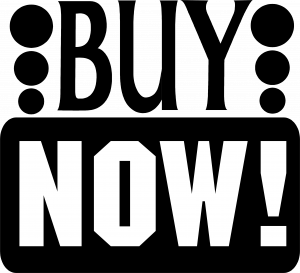"Your Business is Only as Good as Your Accounting System" by Dave Baldwin
This article may be a rude awakening for a number of small businesses. You may bake the best cupcakes, deliver the best massages, or engineer the fastest and most secure computer systems, and still be held back by your accounting system. It's a sad thing when businesses make amazing products or invest years of sweat equity to build a stellar reputation -- only to watch it all crumble because they didn't build a robust financial infrastructure to support it. The cold hard truth is that every business's accounting system (or lack thereof) is ultimately what makes or breaks the business.
What does accounting have to do with your competitive advantage?
 The competitive advantage of a business is that which your competitor cannot easily duplicate. In Rule #1, investor Phil Town details the approach by which he follows Warren Buffet's methods for investing in companies. One of the criteria is what he calls "moats," or layers of protection around the proverbial castle that comprises a business. One type of moat is a well-established brand name. Even if a competitor builds a superior product at a lower price, they cannot copy or take away brand recognition. A strong brand does not guarantee success in itself, but it is a key factor in the longevity of a business.
The competitive advantage of a business is that which your competitor cannot easily duplicate. In Rule #1, investor Phil Town details the approach by which he follows Warren Buffet's methods for investing in companies. One of the criteria is what he calls "moats," or layers of protection around the proverbial castle that comprises a business. One type of moat is a well-established brand name. Even if a competitor builds a superior product at a lower price, they cannot copy or take away brand recognition. A strong brand does not guarantee success in itself, but it is a key factor in the longevity of a business.
Now, let's take a look at how management systems play a role in competitive advantage. Let's use a hypothetical example of two marketing agencies. Both agencies have highly creative talent. Both are well-known in their markets. Both work with high-profile clients. Both have a well-established track record for delivering great service. But they diverge in one area: accounting. We'll call them Agency A and Agency B.
Agency A has a basic nuts-and-bolts accounting system. They keep track of their costs, they know how much money they have. They know their cash flow, and they know their break-even point. They know how many client engagements they need per month to cover their overhead expense and taxes. The goal of Agency A's accounting system is to keep the lights on. And it works.
Agency B, on the other hand, looks at accounting differently. They aren't just trying to survive; their goal is to grow. Their goal is to dominate their space and scale their business to twice its current size over the next two years. They have built a system to support their objectives.
Now, let's take a look at the difference between their accounting systems.
Sales, Marketing and Revenue Forecasting
 Agency A knows how much revenue they bring in each month. They have a rough estimate of how much they are likely to make for the next six months, based on their recurring monthly revenue from regular clients as well as a few deals in the works that they expect will close soon. They exhibit at a couple of expos each year, and they've found that these usually generate enough business to pay for themselves. They don't feel the need to examine any data, because they know that certain marketing tactics work if you just do them. They don't take clients whose budgets are too small. They will never say no to a client with a big budget, unless they just can't do the work.
Agency A knows how much revenue they bring in each month. They have a rough estimate of how much they are likely to make for the next six months, based on their recurring monthly revenue from regular clients as well as a few deals in the works that they expect will close soon. They exhibit at a couple of expos each year, and they've found that these usually generate enough business to pay for themselves. They don't feel the need to examine any data, because they know that certain marketing tactics work if you just do them. They don't take clients whose budgets are too small. They will never say no to a client with a big budget, unless they just can't do the work.
Agency B knows how much revenue they bring in from each of their major service lines, and they've used their accounting system to determine which types of services are the most consistently profitable. They track their marketing campaigns and sales activity relentlessly, and they pay close attention to how much it costs them to acquire each new customer. They notice where their best customers come from, and how many marketing touches each one required. Based on this data, they constantly fine-tune their campaigns and focus their advertising spending on the most effective marketing channels. They are sometimes surprised at what the data reveal. They are not concerned with how big or how small a client is; only whether the job is profitable and whether the client is a good fit. They take pride in their track record of starting with small clients and helping them grow. They have also walked away from multimillion-dollar accounts when the risk was too high.
Talent Utilization and Capacity
 Agency A tracks time spent on client projects with a reasonable degree of accuracy. They have a pretty good sense of how busy everyone is. They are very cautious about hiring, because they've made the mistake in the past of hiring too many people and then needing to let some go when business slowed down. They often use independent contractors and freelancers as a stop-gap measure when large projects come in or when work becomes unusually busy. They like having a flexible work force that can be called on an as-needed basis. Hiring full-time staff is generally a rarity unless someone leaves the company, so they usually do not advertise for new talent. When they do hire, they are often in a hurry to fill the position quickly because it is in reaction to a sudden upswing in work, so they can't be as selective as they would like to be.
Agency A tracks time spent on client projects with a reasonable degree of accuracy. They have a pretty good sense of how busy everyone is. They are very cautious about hiring, because they've made the mistake in the past of hiring too many people and then needing to let some go when business slowed down. They often use independent contractors and freelancers as a stop-gap measure when large projects come in or when work becomes unusually busy. They like having a flexible work force that can be called on an as-needed basis. Hiring full-time staff is generally a rarity unless someone leaves the company, so they usually do not advertise for new talent. When they do hire, they are often in a hurry to fill the position quickly because it is in reaction to a sudden upswing in work, so they can't be as selective as they would like to be.
Agency B is rigorous about utilizing their team's time and talent in the most effective possible way. They have broken down each service line into standard operating procedures, and they have defined benchmarks detailing reasonable time spans for completing tasks. When they notice that tasks are taking longer than usual to accomplish, they investigate to figure out why. Agency B's management carefully watches the team's capacity and is always advertising and interviewing candidates for their next team member. They are always anticipating growth, and they know when to pull the trigger on a new hire based on their sales pipeline and capacity of their current team. They view the next hire as inevitable, and they recognize that finding the right person may take time, so they are always advertising and interviewing whether or not they have an immediate need.
Company Culture
 Agency A has a ping pong table and free coffee in their employee lounge. They take pride in having a hard-working team, but also a laid-back office. Employees generally like working there, and the pay and benefits are comparable to the rest of the industry. Communication is good overall, and people have a lot of flexibility to do their jobs in the way that they prefer- as long as the work gets done and the clients are happy. People sometimes work from home, and they enjoy the flexibility to adapt their schedules to the needs of their families, to a reasonable degree. There is no obvious path for advancement at Agency A, but management points out that there's plenty of room to grow for people who take initiative. They've been frustrated a couple of times when their best people left to take jobs in larger firms or to start their own businesses. There have sometimes been grumblings about inconsistencies in pay, but the owners feel that this is not justified.
Agency A has a ping pong table and free coffee in their employee lounge. They take pride in having a hard-working team, but also a laid-back office. Employees generally like working there, and the pay and benefits are comparable to the rest of the industry. Communication is good overall, and people have a lot of flexibility to do their jobs in the way that they prefer- as long as the work gets done and the clients are happy. People sometimes work from home, and they enjoy the flexibility to adapt their schedules to the needs of their families, to a reasonable degree. There is no obvious path for advancement at Agency A, but management points out that there's plenty of room to grow for people who take initiative. They've been frustrated a couple of times when their best people left to take jobs in larger firms or to start their own businesses. There have sometimes been grumblings about inconsistencies in pay, but the owners feel that this is not justified.
Agency B has a no-frills workplace. Everyone discussed the idea of adding perks like a nicer employee cafeteria, but since the company has a generous profit-sharing plan, and everyone feels a sense of ownership in the company, no one wanted to spend the money on extraneous benefits. At Agency B, everyone loves their work. They know their numbers, and everyone is fantastic at what they do. There is never a boring day at Agency B, because they are always taking on new challenges. Since the company is always growing, new opportunities for career growth are always emerging. It is rare that the company makes a bad hire, and when they do, it becomes apparent quickly. The wrong people weed themselves out. There is a sense of friendly competition among the team. People work different schedules, but everyone is dedicated and working hard, and no one doubts it. Because everyone's job is measured against benchmarks, there is never any question as to who is performing and who isn't.
Which agency would you rather work for? Which one would you be more likely to invest in? Which one's services would you be more likely to retain?
Every single competitive advantage listed here, and countless others, all boil down to accounting systems. There is one difference between best-in-class businesses and average businesses, and it all boils down to their accounting systems. As boring as it might sound to some, the accounting system of a business is what creates the clarity and insight to make decisions. Businesses that have imprecise accounting systems tend to make decisions based on feelings, and people tend to perceive feelings as more accurate than they really are.
If you're weighing your options for next year and considering what investment of time and energy will make the biggest difference, the first place to look is your accounting system.
Dave Baldwin is an integral part of The Bookkeeper staff experienced in marketing and management consulting. His own entrepreneurial journey was spurred on by a desire to help introverted entrepreneurs succeed in business.
Local Entrepreneur Spotlight: An Interview with Dave Baldwin of Baldwin Management Consultants
 Courtney recently sat down with Dave Baldwin, of Baldwin Management Consultants, in Raleigh. From his website: "Dave Baldwin is an experienced marketer and self-taught entrepreneur who first went into business for himself in 2007 after ten years in the technical field, spurred on by a desire to help introverted entrepreneurs succeed in business. Dave has worked with clients in a variety of different industries."
Courtney recently sat down with Dave Baldwin, of Baldwin Management Consultants, in Raleigh. From his website: "Dave Baldwin is an experienced marketer and self-taught entrepreneur who first went into business for himself in 2007 after ten years in the technical field, spurred on by a desire to help introverted entrepreneurs succeed in business. Dave has worked with clients in a variety of different industries."
Courtney: I can't start without asking about "Let's Not Have Coffee". Why do you think that piece has become so popular so quickly?
My other skill set is marketing copywriting, which is mostly a matter of speaking the customer's language. That's not easy, but I've developed some simple methods for uncovering what's important to customers. It starts with asking the right questions, and I've been told I have a gift for that. Being a consultant is not about telling someone what to do. It's about helping a client create a solution that they feel good about. Most people already have most of the knowledge they need to solve their own problems, but they just haven't looked at their situation from the right vantage point. A good marketing message should help them see things in a new way.
In addition to being an established local entrepreneur, Dave is one of the breakout speakers at the upcoming Triangle Small Business Summit, sponsored by Affordable Promos and The Bookkeeper. Dave will be speaking on Using Technology and Automation to Grow Your Small Business.
When you're hungry, E.A.T.
Every small business has, or should have a marketing strategy. If, like us, you sell to other businesses instead of directly to consumers, referrals are likely a huge part of that strategy.
I have seen small business owners put a lot of effort into obtaining referrals: they join networking groups, visit socials, and schedule 1-on-1s with various referral partners (or potential referral partners).
However, many business owners neglect to put any thought into their best potential referral source: current clients.
Now, asking a client for referrals is a delicate science. (After all, you've already asked for and obtained their business; it can feel presumptuous to ask for even more on top of that.) But if you are strategic, while continuing to put the client first, current clients can be an incredible pipeline for new business.
If you are hungry for new business, remember the acronym "EAT".

"E"arn
This shouldn't need to be clarified but, in order to get referrals, you need to earn referrals. If someone is giving you a referral, they are sticking their neck out for you because, if you do a bad job, it reflects poorly on them.
This is especially true for clients, who should know better than anyone what level of quality service you provide. And if they are not completely happy with your service, pushing for a referral they don't feel you've earned may actually cause them to reevaluate their relationship with you.

"A"sk
Asking for referrals can be awkward, but if you have a client who is thrilled with your services and is already telling you they're happy, it is reasonable to transition to a request for referrals at that time. It also never hurts to have a bonus for referrals, whether that's a discount, cash bonus, or a discounted rate for the client they're recommending. (Note: Some businesses can't receive cash gifts, but might still appreciate a gift basket or being taken out for a meal.)
Beyond asking the right way, you need to be thoughtful in your timing of asking clients for referrals. Don't ask for referrals right at the beginning of an engagement, as they have not yet had accurate time to reflect on your service. Also don't ask for referrals if the client is in the middle of a crisis you're helping to solve; their minds are not in the place to think of anyone who could use your business, and it is a bit manipulative to put that pressure on them when they are already stressed out.

"T"each
If your clients are very happy with you, they might want to send you referrals, but just don't know how. This can especially be true if your business is one that many people don't understand, or if you work with a wide variety of clients.
For instance, many of our clients and referral partners don't initially realize that, though we mostly work with established companies, we also work with very small and new start-ups. Once they found that out, several of my business friends told me, "I have someone who needs your help." The issue wasn't with a lack of referrals, but with a lack of education coming from me.
Keep your clients up-to-date on what you're working on, without being intrusive, and they will likely think differently about how they can refer business to you.
Guest Post: "What Does Marketing Strategy Have to do with Bookkeeping?" by Haley Lynn Gray
I have run across more than a few small business owners - some doing okay for themselves, others not - who take the shotgun approach when it comes to marketing their business. The first key is when they tell me that they have “The Facebook”, and they’re doing “ads”, and they are doing a bit of this and a bit of that.
I know that they are likely trying everything they come across, with little regard for the strategy and overall marketing plan. It’s not that I don’t believe in being spontaneous, or even getting creative with part of your marketing. But the reality is that nearly every piece of your marketing should come together; it should all work together, sort of like an orchestra.
 If you start running Facebook ads without a solid presence and good organic reach, the cost of your ads is going to be significantly higher, and the cost per client for acquisition is going to be dramatically higher. In some cases, I’ve seen the cost of a lead being 5-10 times the cost that it would be with a good organic strategy.
If you start running Facebook ads without a solid presence and good organic reach, the cost of your ads is going to be significantly higher, and the cost per client for acquisition is going to be dramatically higher. In some cases, I’ve seen the cost of a lead being 5-10 times the cost that it would be with a good organic strategy.
The same concept applies to Google Adwords. The lower your SEO ranking, and the less high quality content you have on your website, the higher your cost will be to advertise with Google Adwords.
I see people who toss up a landing page using Web.com, YP.com or others. Unfortunately, if you take this approach, you might be building links to a website that isn’t your own. It won’t help you get that organic reach for your website and you’re losing control of the process. You’ll also end up spending more money for fewer leads, and thus end up with fewer results.
 It’s important to have a strategy with all the pieces coming together. Sometimes the tweaks can be tiny, like adding a clear call to action on every blog post, or making a point of collecting email addresses so that you can stay in touch with people via email campaigns. It takes strategy and planning to collect those email addresses and to execute a well thought-out marketing campaign. By thinking through how all of the pieces should work, and with help from a strategist if you need one, you can end up saving a lot of money.
It’s important to have a strategy with all the pieces coming together. Sometimes the tweaks can be tiny, like adding a clear call to action on every blog post, or making a point of collecting email addresses so that you can stay in touch with people via email campaigns. It takes strategy and planning to collect those email addresses and to execute a well thought-out marketing campaign. By thinking through how all of the pieces should work, and with help from a strategist if you need one, you can end up saving a lot of money.
Every business needs a strategy and a budget. So does a marketing plan. Everything should be measured, and data should be collected on how your system is performing so that it can be tweaked and improved. Do these steps for every aspect of your business and you will see savings and a healthier bottom line.
Haley Lynn Gray is CEO and Founder of Leadership Girl, a digital marketing agency, where she uses her skills as a sales and marketing strategist and social media expert to help small business owners grow their business.She combines her years of real-life and business experiences with her MBA from Duke’s Fuqua School of Business to benefit her clients. Haley works with them closely to set goals and put processes in place so they can achieve and exceed their goals.
Haley, along with her team, can also help with social media management, website updates, drip campaign management, and all aspects of business marketing.
In addition to running her business, Haley is a mom of four, a Girl Scout Leader and an author of two best-selling books. Haley is truly passionate about helping entrepreneurs achieve their potential, and empowers them to overcome obstacles in entrepreneurial ventures. www.leadershipgirl.com
Networking: What's Worked for Us
I know this will probably get lost in the sea of thousands of articles telling you how to be a better networker. But if you're reading this, it's likely that you are at least passingly familiar with The Bookkeeper. We get asked frequently how we grew our business so fast, and networking is certainly a component of that.
When it comes to networking, here is what has worked for us over the last three years.
Know your message.
 A friend in marketing once told me, "Don't tell people how you're better. Tell people how you're different." We expended a lot of energy, early on, in trying to present the image we thought a serious bookkeeping company should have. (I, in particular, in an effort to look older, adopted a uniform of all-black, conservative clothing with my hair in a perpetual bun.) People didn't respond to the image we were putting forth because a) it wasn't genuine and b) they had seen it a thousand times.
A friend in marketing once told me, "Don't tell people how you're better. Tell people how you're different." We expended a lot of energy, early on, in trying to present the image we thought a serious bookkeeping company should have. (I, in particular, in an effort to look older, adopted a uniform of all-black, conservative clothing with my hair in a perpetual bun.) People didn't respond to the image we were putting forth because a) it wasn't genuine and b) they had seen it a thousand times.
Success came when we nailed down who we are, specifically. We're the company who does high-standards bookkeeping, but then also uses the information the books provide to do so much more for our clients. Once people found out that we did things like pricing strategy, forecasting, or even just filing 1099s, they got a lot more excited about our business.
Knowing exactly who we are has also helped us pinpoint who our ideal client is. In networking, it's easy to say, "My ideal referral is anyone!" But that really does not help the people who are trying to send you referrals. Yes, we would love to work with just about any small to mid-sized business. However, our ideal referral is really a potential client who is willing to listen and follow guidance; otherwise, they wouldn't be taking full advantage of our services.
Narrowing the scope of your business, as opposed to using a "shotgun" approach, helps your message penetrate deeper in your audience's mind and leave a lasting impression.
Mix it up.
Every company officer at The Bookkeeper has membership in a seat-specific networking group (i.e. a group where we're the only bookkeeper represented). Some of us are in more than one. And we demonstrate reliability to those groups by honoring the attendance requirements, but we also try to keep our routine fresh. Changing up our 60-second "elevator pitch" (a short spoken commercial about the company) week-to-week helps, as does bringing visitors or sending substitutes when we're absent. If we were to come and make the same speech week after week, the members of our groups would learn nothing new about us. Sometimes, just wording our pitch a little bit differently can spark something in another member's mind to make them realize, "Ah, I have a referral for them."
We've also found it helpful to break outside of our own groups. Visiting other groups, even if they have a member who might be considered "competition", is valuable. Not all bookkeepers work with all types of clients, and we frequently receive referrals from other bookkeeping companies who don't do exactly what we do. Night networking, which is typically more casual, can be beneficial as well. This is particularly good for those who are nervous about public speaking, as there's never a moment when you have to stand up and be the center of attention. And, since many small business owners are still working day jobs while they grow their own business, you get to meet a different set of people.
Follow up!
 Yes, every bit of networking advice includes this, but only because it is so important. If someone meets 100 new people in an evening, how can you expect them to remember you long-term unless you remind them?
Yes, every bit of networking advice includes this, but only because it is so important. If someone meets 100 new people in an evening, how can you expect them to remember you long-term unless you remind them?
In a networking situation, you're not getting to spend much time with each person. The real work comes after that initial meeting, when you follow up with a 1-to-1. The one-on-one follow-up meeting is where you get to really show the person why you're interested in their business and what you have to offer, to them or referrals.
However, 1-to-1s don't have to be strictly business. It's always good to take a more professional tone with someone you're just getting to know, but it's also great to "touch base" with close referral partners. That can be an office meeting, but it can also be meeting for drinks or going to watch a game.
Come to serve, not to sell.
"Show, don't tell," works as well for networking as it does for storytelling. Someone who spends their entire time networking telling everyone how great their services are is off-putting, and has not yet earned enough trust to make those claims believable. Someone who shows that they are a competent and honest individual, by helping others within the group, commands respect.
One of my favorite things in networking is when I identify someone who would be either a good vendor or customer for one of my clients. Without a word of self-promotion, I'm empowered to benefit two businesses within my networking circle. Though it doesn't result in immediate business for my company, I still consider it a win-win, because it benefits my client, and it helps me to make a good connection with someone who could be a future client or referral partner. By referring them to each other, I am demonstrating my value to both.
Serving others also gives them a great opportunity to return the favor. No one enjoys 1-way relationships; you have to show a willingness to put others' needs before your own, and the right people will honor that by sending business back your way. However, that does not mean you help others only with the intention of getting something in return. Which leads to our final point...
Be real.
 There is this tendency in new networkers to act like they have everything together, all the time. And while you do need to be professional and not falling apart during a networking meeting, it is also okay to be honest about business challenges you're facing. Keeping a perfect veneer can be very unsettling to the people you meet, and you will find that you form better bonds when you allow people to help you.
There is this tendency in new networkers to act like they have everything together, all the time. And while you do need to be professional and not falling apart during a networking meeting, it is also okay to be honest about business challenges you're facing. Keeping a perfect veneer can be very unsettling to the people you meet, and you will find that you form better bonds when you allow people to help you.
No one has it all together, and people recognize that. You will never lose business just because you're human. If you do, it's not business you really want to have.
How much are you paying for your free lunch?
"There's no such thing as a free lunch." Anyone who has taken even the most basic economics course has heard it. But what does it mean, exactly?
The "free lunch" idiom is frequently used to simplify the concept of opportunity cost, in that, even as you accept a free lunch, you miss out on other opportunities during that period of time. Investopedia defines opportunity cost as, "The cost of an alternative that must be forgone in order to pursue a certain action. Put another way, the benefits you could have received by taking an alternative action."
It's a fairly basic definition and it's one that most business owners understand...in theory. However, for many entrepreneurs, the desire to keep costs low can cycle into a "do-everything-yourself" mentality, which, in turn, lends to missed opportunities.

To better illustrate this issue, consider Janice, professional photographer (and fictional entrepreneur we created for this example).
After experiencing a great deal of amateur success, Janice has decided to become a professional photographer full-time, and open her own studio. She determines that her new business needs the following things:
- A photographer
- Photo editing
- Someone to answer the phone and schedule appointments
- A website
- Bookkeeping
None of this looks too hard to start with, and Janice figures she can handle most of it. She's got the photography and photo editing skills already and, until she can afford to hire a receptionist, she can just take business calls on her cell. There are plenty of places online where anyone can build a free website, and she can keep track of her own business financials throughout the year and figure it all out with TurboTax in April. For a great photographer and hard worker, this shouldn't be any problem.
Of course, things don't go as simply as Janice has predicted. Her phone rings with appointment requests while she's in the middle of sessions and, by the time she calls the prospective customer back, they have already booked with someone else. Her shoots run long because she has to change backdrops, arrange props, etc. by herself. Her days are so busy she has to stay up late working on photo editing. The website she built is...okay, but comes across as generic and slightly amateurish. She's not entirely sure how her bookkeeping as going because, with everything else going on, it's been the last thing on her mind.
On top of all that, she's started to notice that her business needs some things she hadn't planned for, including:
- Photographer's assistant
- Studio cleaning
- Basic legal documents
For the sake of comparison, let's assume Janice continues to do all of this herself. Let's look at how much money she is saving.
Receptionist - $9/hour
Website - $500
Bookkeeping - $500/month
Photographer's Assistant - $12/hour
Cleaning - $8/hour
Basic legal documents - $300
It looks like Janice has saved her business a lot of money through her strenuous efforts and "can-do" attitude. However, we have to factor in the opportunity costs.
Let's take a look at what each of these things Janice is doing herself, each "free lunch", cost:
Receptionist - Missed income from lost appointments; positive word-of-mouth; professional image
Website - Lack of professional image; loss of referrals; missed income
Bookkeeping - Missed deductions; increased risk of audit
Photographer's Assistant - Shoots take longer so fewer of them can be scheduled, leading to missed income
Cleaning - Time and energy diverted away from more profitable activities, such as photo editing and networking
Basic legal documents - Increased legal vulnerability; loss of time
So, when you weigh all the opportunities to genuinely build her business which Janice has lost while she was busy doing everything else, how much money did she really save?
Now, this isn't to say that you should farm out every task you dislike (particularly early on, when small businesses are susceptible to cash flow woes). However, it is key that, before committing yourself to something outside of your wheelhouse, you measure the benefits of DIY versus outsourcing. In many cases, the opportunity costs will be greater than you think.
Marketing to Customers (Who Aren't You)
Growing your business is an exciting challenge. It's a time when you're ready to take on new customers, and you feel like you're ready for that "next step".
Of course, if you've been only working with a few close clients or through word-of-mouth, you may find it difficult marketing and networking with people outside your social circle. That's understandable; it's easier and more comfortable working with people with whom you have a lot in common.
However, diversity amongst customers is necessary to really expand your business, and is a great way to avoid having all your "eggs in one basket". But even mega corporations fall victim to major mistakes when it comes to marketing to a diverse audience. Here are some "do"s and "don't"s for reaching customers who are nothing like you.

Do your research.
There is an enduring (if slightly ridiculous) urban legend about General Motors expanding into international sales. The legend goes that attempts to market the Chevy Nova in South American countries met with failure because no va in Spanish means "doesn't go".
According to popular web aggregator of urban legends Snopes.com, this tale is a myth. And, upon further inspection, that makes sense. After all, even in the '70s, surely GM would have had someone fluent enough in Spanish to alert higher-ups about the possible translation issue? Besides, even if the Nova legend were true, we savvy businesspeople of the 21st century surely know better now.
Enter, Twitter. Though most Americans have a passing colloquial knowledge of Spanish now, in the digital era, technology has created a communications gap that spans generations instead of nationalities.
Now, there have too been too many Twitter scandals to ennumerate, but a recent marketing disaster illustrates just how bad it can be when a company tries to hitch onto a trend they haven't fully researched. When the #whyIstayed hashtag began trending, with former victims of domestic violence listing the reasons why they didn't immediately leave abusive partners, pizza company Digiorno tweeted, "#whyIstayed You had pizza."
Of course, Digiorno did not mean to make light of domestic abuse, and immediately issued an apology with the explanation that they hadn't read what the hashtag was about before posting. So failure to perform roughly 30 seconds of research resulted in a marketing disaster.
Don't be needlessly specific in your marketing.
Companies often seem to think they need to change their message in order to reach a new audience. Here they enter a minefield of marketing hazards, frequently falling prey to tropes and stereotypes, alienating the people whom they'd wished to include.
We have Bic to thank for the most hilarious trainwreck in unnecessarily-pointed marketing. When Bic came out with a line of "For Her" pens, they were flooded with sarcastic Amazon reviews. Customers rightly (and very snarkily) questioned why men and women would require distinct writing utensils. Bic's attempt at marketing toward a specific audience had unintentionally come across as condescending and ridiculous.
Whoever the customers you're trying to reach are, your company hasn't changed. So instead of changing the message about the benefits and values of your brand, change your marketing channels. Advertise in different channels, or across different platforms. If you use physical signage or flyers, try different locations. Just whatever you do...

Do be genuine.
Think back to your favorite high school teacher. You're probably thinking of someone who inspired you; someone who took an honest interest in your goals and success.
Now think back to that high school teacher who wanted desperately to be liked by their students. Who tried too hard to be cool by talking and acting like a teenage and, as a result, was respected by no one.
So frequently when companies try to market outside of their comfort zone, they follow the cringe-inducing pattern of the second example, awkwardly squeezing into ill-fitting jargon and trends. I will never forget a local tv ad, infamous in our area, for its inclusion of a senior citizen quoting, "Whoop, there it is!"
The ad was for a furniture retailer, and I doubt they attracted any new young customers through that awkward reference to an outdated rap song. They would have been better served by providing something relevant and of value, for instance, payment plans for customers without established credit.
When you look at it closely, marketing to a diverse set of customers really isn't that different from how you market to anyone. By keeping the focus on your brand and the value you provide, you can maintain integrity and avoid any awkward pitfalls.




